All OneFLOWArray™ Airflow Test Stands use our in-house precision machined and polished Sonic Nozzles as their primary flow measurement Transfer Standard.
A Sonic Nozzle (Critical Flow Nozzle, Critical Flow Venturi (CFV), Sonic Venturi) is a converging-diverging flowmeter, and because of its exceptional repeatability, has become the world standard for air flow measurement in the gas and aerospace industries.
What is the best transfer standard for gas flow?
See what John Wright, of National Institute of Standards and Technology (NIST) has to say >
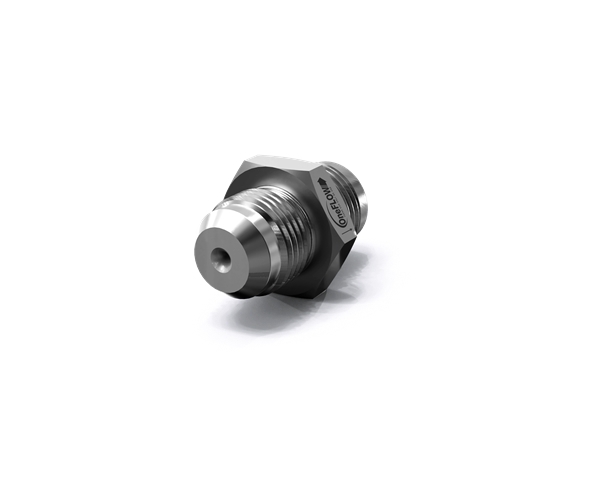
1/2” (-08) AN Fitting with integrated Sonic Nozzle, d=0.022” +0.000”/-0.001”
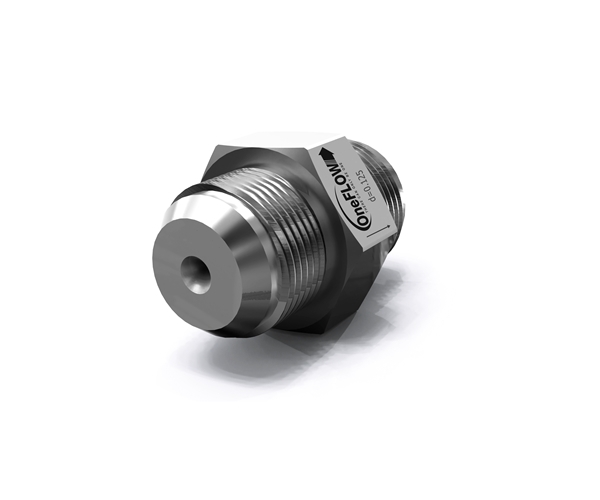
1” (-16) AN Fitting with integrated Sonic Nozzle, d=0.125” +/-0.001”
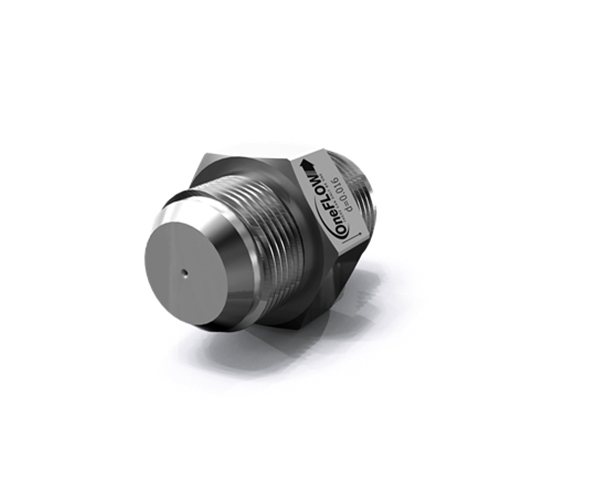
1” (-16) AN Fitting with integrated Sonic Nozzle, d=0.016” +0.000”/-0.001”
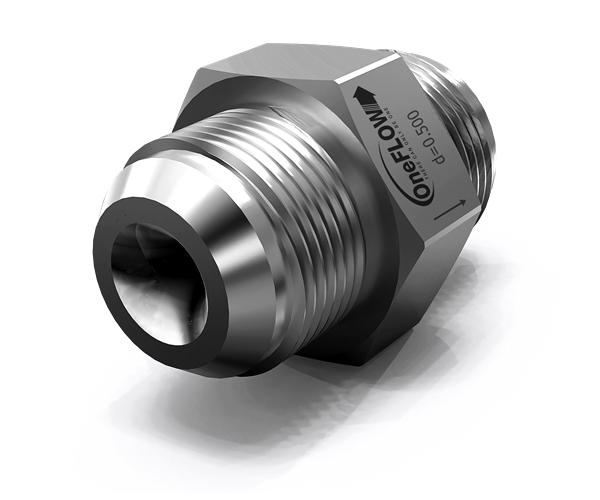
2” (-32) AN Fitting with integrated Sonic Nozzle, d=0.500” +/-0.001”
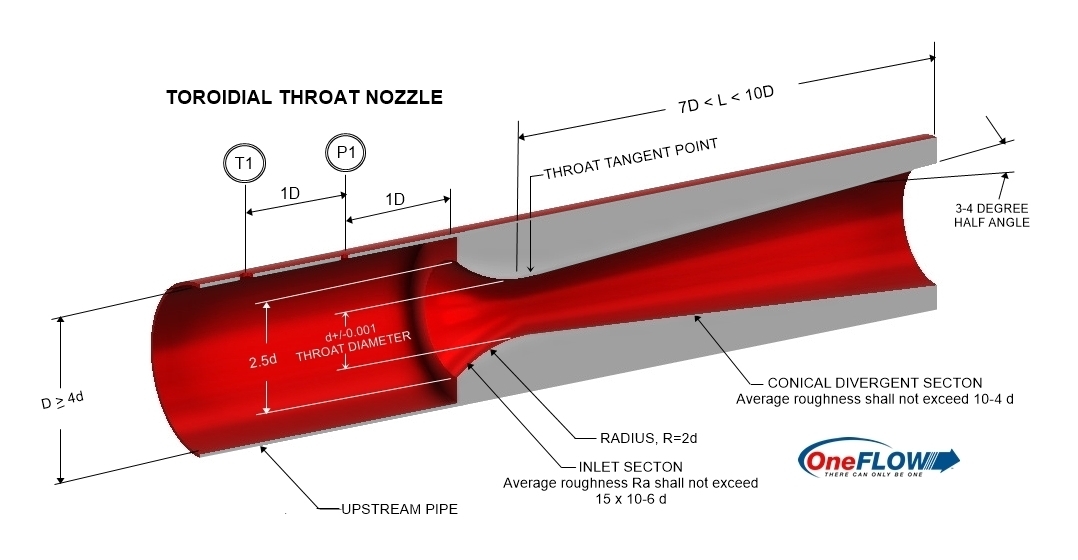
Sonic Nozzle Design: Defined and designed per ISO 9300:2018, “Gas flow measurement — Sonic nozzles for gas flow measurement” This standard specifies the performance characteristics of sonic nozzles, including their design, testing, and calibration procedures.
A Sonic nozzle typically consist of a highly polished radial inlet converging section transitioning to a minimum throat diameter and then diverging along a pressure recovery section or diffuser. The converging section accelerates the flow of gas, while the throat is designed to have a precise cross-sectional area that causes the flow to reach sonic velocity (Mach 1) under specified conditions. The diverging section allows the flow to expand and recover pressure after passing through the throat. Depending on the flowrate, pressure recovery can reach 90%.
Mach Number Explanation:
Inlet: Subsonic flow (Mach < 1)
Throat: Sonic flow (Mach = 1)
Exit: Supersonic flow (Mach > 1)
Choked Flow Principle: A sonic nozzle or CFV operates based on the principle of choked flow. Choked flow occurs when the gas flow velocity at the throat of the nozzle reaches the speed of sound (sonic velocity) for the particular gas under specific temperature and pressure conditions. At this point, further decrease in downstream pressure does not increase the mass flow rate, leading to a choked condition.
Advantages of a Sonic Nozzle
Precise Flow Measurement
Accuracy: Sonic nozzles are highly accurate, with exceptional predictability for measuring the flow rate of gases. At sonic conditions (Mach 1 at the nozzle throat), the flow rate is a function of the nozzle's cross-sectional area, inlet pressure, and inlet temperature, making it easier to quantify the flow with minimal measurement errors. High Accuracy – better than +/- 0.14% of flow rate is achievable.
Controlled Flow Conditions
Constant Flow Rate: Once the flow reaches sonic conditions, the mass flow rate becomes independent of downstream pressure variations. This property ensures that the flow rate is stable and controlled, which is crucial for experiments and applications requiring consistent conditions.
Efficient Throttling
Regulated Flow: Sonic nozzles can be used to regulate the flow of gases through adjustments in upstream pressure, allowing for precise control over the flow rate without needing complex throttling mechanisms.
Calibration Standard
Reference Nozzles: Sonic nozzles are often used as calibration standards for other measurement devices. They provide a reference for calibrating pressure transducers, flow meters, and other instrumentation due to their well-understood flow characteristics at sonic conditions. A sonic nozzle is an Internationally recognized as a Flow Standard.
Versatile Applications
Wide Range of Uses: Sonic nozzles are employed in various applications, including:
- Aerospace: For testing propulsion systems and simulating high-speed flight conditions.
- Fluid Mechanics Research: To study compressible flow phenomena and validate computational models.
- Industrial Processes: For gas flow measurement in systems like pneumatic conveyors and gas distribution networks.
Reduced Energy Loss
Efficient Design: Sonic nozzles are designed to operate at conditions where energy losses due to friction and heat dissipation are minimized, making them efficient for applications that require precise and minimal energy and pressure losses.
Predictable Performance
Known Characteristics: The performance of a sonic nozzle is well-documented and predictable under specific conditions, which simplifies the design and analysis of systems using this as a primary flow device.
Improved Measurement Resolution
High Sensitivity: Because the flow rate is directly related to the pressure, temperature and the nozzle’s geometry, sonic nozzles can offer high resolution and Precise control over flow rates in flow measurement, which is beneficial for detecting small changes in flow conditions.
Stable Test Conditions
Simulated High-Speed Flow: In aerospace and other high-speed applications, sonic nozzles can simulate the conditions of supersonic or hypersonic flight, allowing researchers to test components under conditions that approximate those experienced in actual high-speed environments.
Reduced Maintenance
Robust Design: Sonic nozzles have a simple design with no moving parts, which reduces maintenance requirements and extends their operational lifespan compared to more complex flow control devices.
Overall, sonic nozzles are a preferred standard in industries such as aerospace, automotive, oil and gas, and manufacturing where precise and reliable flow measurement is essential for process control.
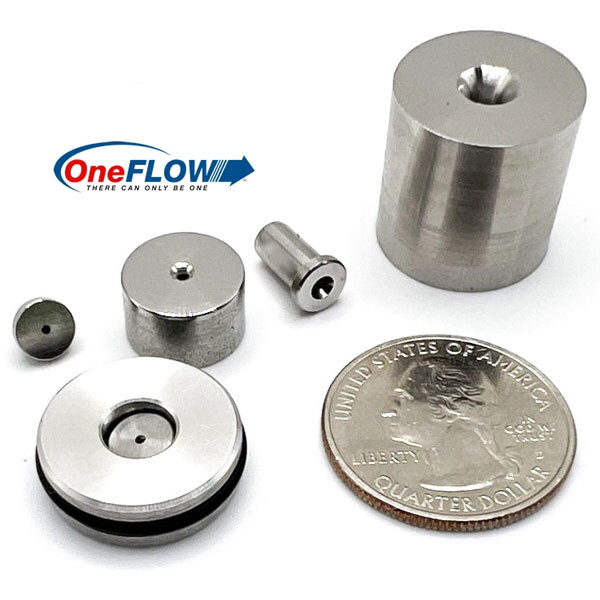
Micro Nozzles
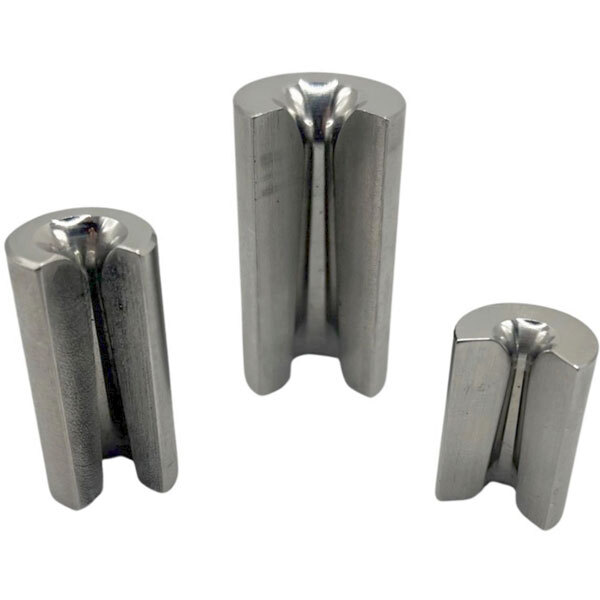
Sonic Nozzle cutaway views to show internal geometry
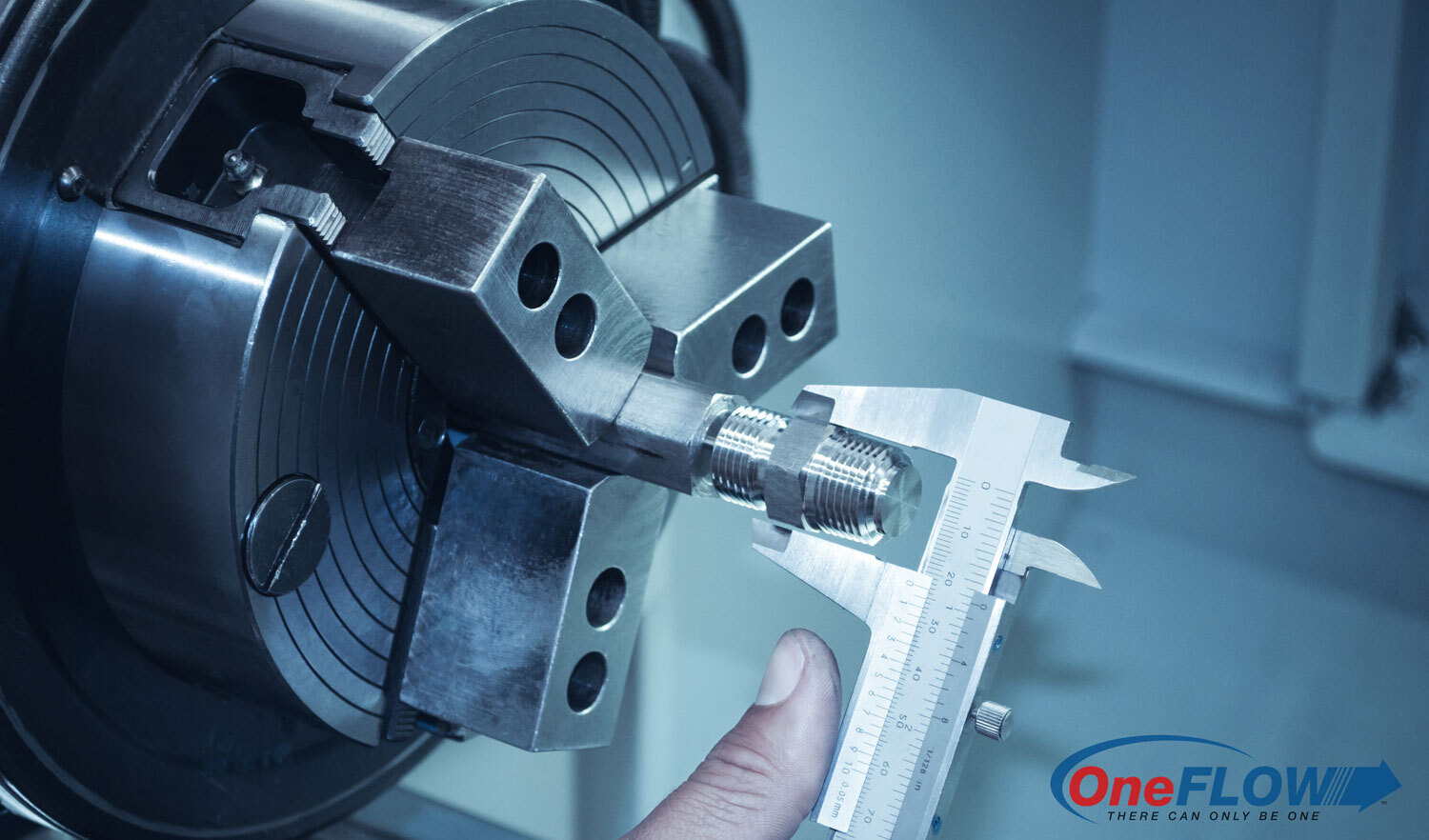
Machining - 1/2” (-08) AN Fitting and Nozzle
Some Applications:
- Flow Measurement and Calibration: Sonic nozzles are used as primary standards for flow rate measurement, especially in calibration of flow meters and other flow measurement devices.
- Gas Flow Control: They are used in industrial processes where precise control of gas flow rates is required, such as in gas chromatography and various analytical instruments.
- Gas Dynamics Research: Sonic nozzles are important in research and development to study the behavior of compressible flows and validate theoretical models.
- Calibration of Gas Turbine and Automotive Gas and Air passages
- Automotive Emissions Testing
- Valve CV Testing: Integral to valve CV testing due to their ability to provide accurate and repeatable flow measurements under choked flow conditions
- Gas Chromatography: In analytical chemistry, sonic nozzles are used in gas chromatography systems for precise control of gas flow rates
- Over Speed protection of Gas Flow Meters
- Aerospace Applications: Sonic nozzles are also used in the aerospace industry for controlling fuel flow rates in rocket propulsion systems
Why Calibrate your Sonic Nozzle?
WITHOUT calibration ASME predicts the uncalibrated flow rate accuracy to be at best, ±1.0% of flow reading. If higher accuracy or certified accuracy is needed, we offer Calibration Service from Colorado Engineering Experiment Station Inc. CEESI. These NIST traceable calibrations can produce accuracy levels of 0.11% to 0.50% of reading on Mass Flow.
OneFlow Specifics
- Designed and manufactured per ANSI MFC-7M and ISO 9300:2022
- Sonic Nozzle throat diameter sizes: Air flow ranges from 0.00013 pounds per second (0.10 scfm) and up.
- End Connections: ANSI Flanged, Sanitary Flanges, Custom Flanges, AN Fittings, NPT Fittings, O-Ring Face Seal, or Custom Mounted Plenum options.
- Materials: Typically, 300 series stainless steel, but aluminum, brass, ceramic, and bronze also available.
- Machining Capabilities: Toroidal Throat diameter ranges from 0.016” to 12.000”
